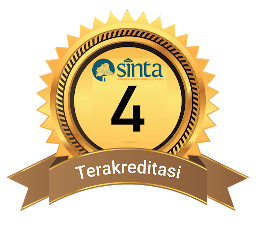Analysis Of The Achievement Of Knowledge Dimensions Of High School Students On Acid-Base Materials Reviewing From Learning Style
DOI:
10.29303/cep.v7i1.4723Published:
2024-05-31Issue:
Vol. 7 No. 1 (2024): Edisi Mei 2024Keywords:
Analysis, Learning Style, Knowledge DimensionArticles
Downloads
How to Cite
Abstract
This research is a quantitative descriptive study with the aim of analyzing the achievement of the knowledge dimensions of class XI MIPA students at SMA Negeri 1 Terara on acid-base material in terms of learning styles. This study involved 102 students as a sample with a sampling technique using simple random sampling. Collecting data using a learning style questionnaire instrument and test questions for the achievement of students' knowledge dimensions. The results of the validity of the learning style questionnaire instrument and the test questions for the achievement of student knowledge dimensions obtained from three validators, namely 0.81 and 0.78, respectively, are valid and can be used to measure the tendency of learning styles and the level of achievement of students' knowledge dimensions but need revision. The results of the study for the learning style questionnaire showed that of 102 students of class XI MIPA at SMA Negeri 1 Terara there were 47 students (46.08%) who had a visual learning style tendency, 29 students (28.43%) who had an auditory learning style tendency, and there are 26 students (25.49%) who have a tendency to auditory learning style. This shows that the dominant learning style owned by students of class XI MIPA at SMA Negeri 1 Terara is a visual learning style. The achievement of students' knowledge dimensions based on learning styles obtained an average test score of 43.42 for students with visual learning styles, 40.45 for students with auditory learning styles, and 43.33 for students with kinesthetic learning styles. This shows that the achievement of the knowledge dimensions of class XI MIPA students at SMA Negeri 1 Terara belongs to the low category.
References
Amelia, S. F. (2018). Analisis Gaya Belajar dan Gaya Berpikir Siswa Kelas VIII Pada Pembelajaran IPA Di SMA Negeri 5 Padang Panjang. Skripsi. Fakultas Tarbiyah dan Ilmu Keguruan. Tadris Biologi. Institut Agama Islam Negeri. Batusangkar.
Asriyanti, F. D., & Janah, L. A. (2018). Analisis Gaya Belajar Ditinjau Dari Hasil Belajar Siswa. Jurnal Kajian Teori dan Praktik Kependidikan. 3(2). 183-187.
Chania, Y., dkk. (2016). Hubungan Gaya Belajar Dengan Hasil Belajar Siswa Pada Pembelajaran Biologi Kelas X SMAN 2 Sungai Tarab Kabupaten Tanah Datar. Journal of Saintek. 8(1): 77-84.
Gunawan., dkk. (2016). Pengaruh Multimedia Interaktif dan Gaya Belajar Terhadap Penguasaan Konsep Kalor Siswa. Jurnal Pendidikan Fisika Indonesia. 12(2): 118-125.
Hartati, L. (2015). Pengaruh Gaya Belajar dan Sikap Siswa pada Pelajaran Matematika terhadap Hasil Belajar Matematika. Jurnal Formatif. 3(3). 224-235.
Ilmah, M. (2017). Miskonsepsi Siswa Pada Materi Asam Basa Dengan Menggunakan Instrumen Test Diagnostik Two-Tier. Skripsi. Fakultas Ilmu Tarbiyah dan Keguruan. Pendidikan Kimia. Universitas Islam Negeri Syarif Hidayatullah. Jakarta.
Irawati., dkk. (2021). Pengaruh Gaya Belajar Terhadap Hasil Belajar IPA. J. Pijar MIPA. 16(1): 44-48.
Kadir., dkk. (2020). Pengaruh Gaya Belajar Siswa Terhadap Hasil Belajar Fisika SMA PGRI Maros. Jurnal Pendidikan Fisika dan Terapan. 3(1): 1-5.
Nurdalilah. (2021). Analisis Kemampuan Berpikir Reflektif Matematika Dengan Gaya Belajar Visual, Auditorial, dan Kinestetik Siswa. Jurnal MathEdu. 4(3). 64-71.
Pertiwi, F. N. (2021). Dimensi Pengetahuan FKPM (Faktual, Konseptual, Prosedural, dan Metakognitif) Mahasiswa IPA Pada Pembelajaran Mekanika. Jurnal Kependidikan Dasar Islam Berbasis Sains. 6(1). 111-124.
Riduwan. (2009). Metode dan Teknik Menyusun Tesis. Bandung: Alfabeta.
Shobirin, M. (2016). Konsep dan Implementasi Kurikulum 2013 Di Sekolah Dasar. Yogyakarta: CV Budi Utama.
Suyono, A. (2018). Pengaruh Gaya Belajar Terhadap Hasil Belajar pada Mata Pelajaran Akuntansi Kelas XI IPS SMA N 3 Tapung Tahun Ajaran 2017/2018. Jurnal Pendidikan Ekonomi Akuntansi FKIP UIR. 6(1): 1-10.
Wiedarti, P. (2018). Pentingnya Memahami Gaya Belajar. Jakarta: Direktorat Pendidikan Dasar dan Menengah Kementerian Pendidikan dan Kebudayaan.
Author Biography
Baiq Nopita Handra Eni, Universitas Mataram
License
Copyright (c) 2024 Baiq Nopita Handra Eni, Syarifa Wahidah Al Idrus Idrus, Supriadi Supriadi, Eka Junaidi Junaidi

This work is licensed under a Creative Commons Attribution-ShareAlike 4.0 International License.
Authors who publish with Chemistry Education Practice agree to the following terms:
- Authors retain copyright and grant the journal right of first publication with the work simultaneously licensed under a Creative Commons Attribution License 4.0 International License (CC-BY-SA License). This license allows authors to use all articles, data sets, graphics, and appendices in data mining applications, search engines, web sites, blogs, and other platforms by providing an appropriate reference. The journal allows the author(s) to hold the copyright without restrictions and will retain publishing rights without restrictions.
- Authors are able to enter into separate, additional contractual arrangements for the non-exclusive distribution of the journal's published version of the work (e.g., post it to an institutional repository or publish it in a book), with an acknowledgement of its initial publication in Chemistry Education Practice.
- Authors are permitted and encouraged to post their work online (e.g., in institutional repositories or on their website) prior to and during the submission process, as it can lead to productive exchanges, as well as earlier and greater citation of published work (See The Effect of Open Access).






